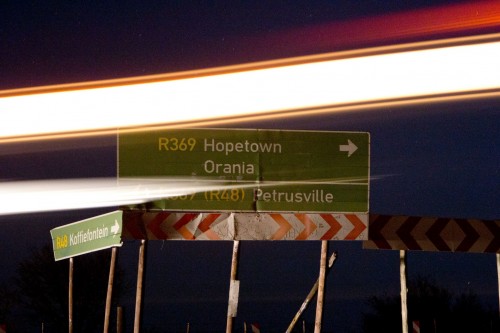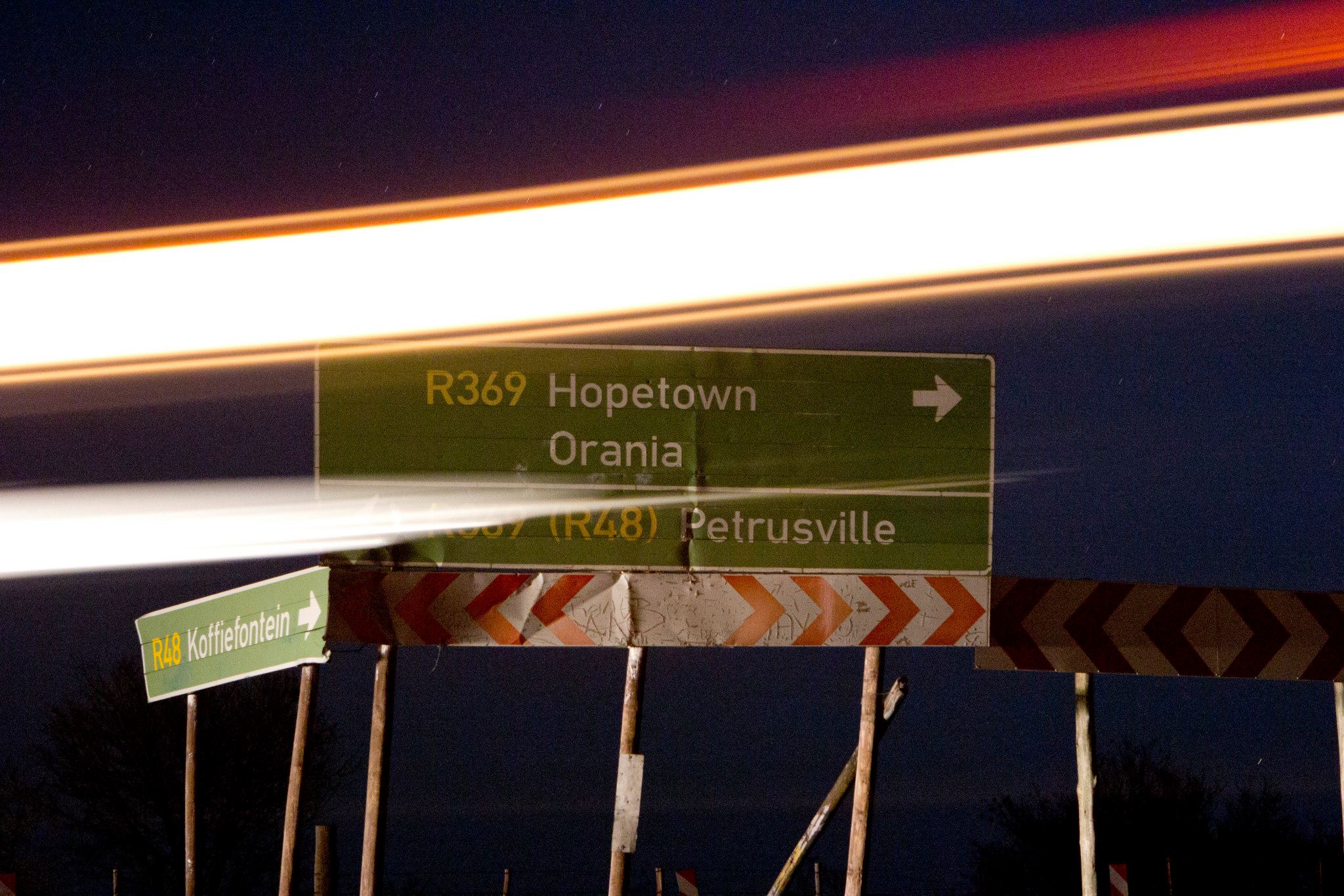The Karoo is hot. Like fucking, sun-massacred hot. The land where God hates the trees. She loves only the scrubby, fragrant bushes that refuse to die and the Orange river. The leviathan that cuts its way through the flat line of the horizon like an old boxer – no speed remains, only power.
The Orange is slowed and controlled – if man ever does that to a river – by the mammoth dams that outlasted the whites who built them. Forged them with black hands, and then disappeared like the dwarves in fantasy novels when those hands finally began to rule the country.
“Oh those dams! They were built by the Afrikaner nationalists. The racist whites who liked apartheid. But they don’t exist anymore.”
Which is, of course, a fiction. The people who voted National Party and kept the whole edifice in place for as long as it was are perfectly alive and all around you. The ones that didn’t flee to enclaves in the UK, Australia and Canada, I mean. Mostly, they’ve been quite good at keeping their uncomfortable silence in exchange for not really ever being asked what they were thinking. And I mean that at the level of parents and their children as much as in terms of any project of national reconciliation.
If they speak out, it’s generally in the context of the joked-about-because-it’s-true white dinner party where older folk make reference to ‘the state of things in Rhodesia’ and how they are messing up the country. It’s always ‘they’, mind. As though it’s obvious that everyone else at the table considers themselves an unreformed citizen of the other country. The one that was before. All of us stopped only by them from running out into the streets singing Die Stem and waving the old flag.
Which is really just a long way of saying that the white folk that like afrikaner nationalism and the advantages it got them did not disappear. Nor are they particularly repentant. However, they do – as a rule – appreciate that epithets about the ‘good old days’ and phrases like ‘separate but equal’ are unwelcome in wider circulation.
Which is what makes a town like Orania really interesting.

The Karoo is fantastic for night time photography because of the near-total lack of traffic on many roads. Where there is traffic though, it tends to be trucks. Which tend to kill photographers.
It lies in the dead-center of the country, practically on the border between the Northern Cape and the Free State. In the dusty, sunburned badlands of the shrubs, alongside the mighty Orange river that prime minister Verwoerd once ordered to be tamed. It’s all-white and unrepentant in arguing for being allowed to remain that way.
Not in as many words, mind. The town is on private land, which gives you some leeway in restricting who can own shares in the company that manages it and – therefore – who can come and live there. But even then having a Slegs Blankes (whites only) policy would be a lightning rod for government attention. So whether or not you are allowed to settle is tied more indirectly to your commitment to ‘Afrikaner culture’, on the understanding (depending on your point of view) that this is a proxy for certain other attributes. Like talking about them at tipsy, inappropriate dinner parties and in queues at wealthier supermarkets.
In theory, of course, there could be a black person whose wholesale dedication to living and promoting afrikaner culture would make him or her eligible for a spot in Orania, but it just hasn’t happened yet. Because afrikaner culture, as required for admission, is not the same thing as many of the afrikaans cultures that exist for other groups in South Africa. It’s not the afrikaans culture of the Cape flats. Nor the progressive culture in pockets of the cities. The type that would sit easily with atheism and excessively liberal views on intercultural dating, for example.
Put differently, Orania’s ideological project feels like it’s based less on whether you speak afrikaans than whether you are committed to a particular kind of afrikaner conservatism. Circa South Africa in 1960.
Which, in turn, helps to explain its HF Verwoerd museum, and the memorial lecture in his name that the town has been holding annually for the last twenty or so years. This – for the non-South African reader – is the man commonly referred to as the architect of the apartheid system. In which it would make good sense to move all the different types of black folks to their own little homelands, so that they could coexist with white South Africa on an equal basis. Cough.
It didn’t work out, historically speaking. So much so that apartheid is actually a crime against humanity. Which is an interesting bit of international legal trivia that you may have been unaware of.
But I digress.
I spent five days there in total, almost a month ago, working on becoming a better videographer and seeing how many straight days in a row I could get my colleague Brad to wear the same shirt in front of the camera (all of them, as it turns out). The video we managed to make is almost certainly not the best we could have, but reflects the leaps and bounds that we all made in learning to tell stories in video. And like any period of learning, is better than the video we could have made on day one, and worse than the video we could have made with the knowledge we had by the last day. The next one will be even better, and so learning happens.
The most difficult part of trying to tell an Orania story really came down to deciding what, exactly, the moral discomfort of the town actually stems from. Because trying to pinpoint what makes me frown about the town is much less obvious than you would think it was.
“Because it’s all white” seems like the most obvious starting explanation. But then there are many all-black areas in South Africa to which white folk would be as unwilling to move as much as black folk might be unwilling to move to Orania.
“Because it’s full of racists” might be another attempt. And sure, the place has some superb qualifiers. The bearded gentleman with the nazi helmet and skull of a baboon that he jokes must be that of a black man. The same man who – as a mercenary in his younger days – helped violently end the Katanga secession in the Congo.
But I know of equally troubled individuals in Johannesburg, Cape Town and Durban. Swap out Congo for Angola, and you have the personal histories of the thousands of South African men who were conscripted into fighting dubious wars elsewhere. If we are going to go racist-hunting, then there are other towns far more more tainted than Orania will ever be.
So, what then?
The closest I can come to a firm faulting of the place is its absolute lack of reflection on the role that Afrikaner nationalism played in screwing up the country. Even now, decades after apartheid officially ended and we all hugged and agreed to keep racism in quiet places, the structure of the edifice remains. Because it wasn’t simply a system of race. It was a system of hyper-exploitation of the poor and a massive exclusion of the majority from the wealth of the country. Those are foundational features of the South Africa of today. They are the source of our increased violence and the threat to the dream of a properly democratic country. They were also the very specific vision of the likes of HF Verwoerd.
When the afrikaner nationalists lost power, many simply retreated into private spaces, to live out a history in which they could be the unfairly treated heroes denied a fair hearing in history. Orania goes a step further, and seems to want to recreate the afrikaner-first politics of the old days in micro while wholly denying any responsibility to participate in the broader project of healing the broken structure that the last afrikaner-first experiment created.
It’s analogous to a child who gets in trouble for burning down a house, and then unrepentantly goes to their room and pulls out a box of matches again. No reflection. No responsibility. There’s no sense that history is not just full of the things you want to keep – like koeksisters and calvinism – but also the things you don’t. The pain and suffering, the inequality and the stubborn stain of privilege.
And for me, that’s the problem. If you want to go and find it in the land where god hates the trees.

